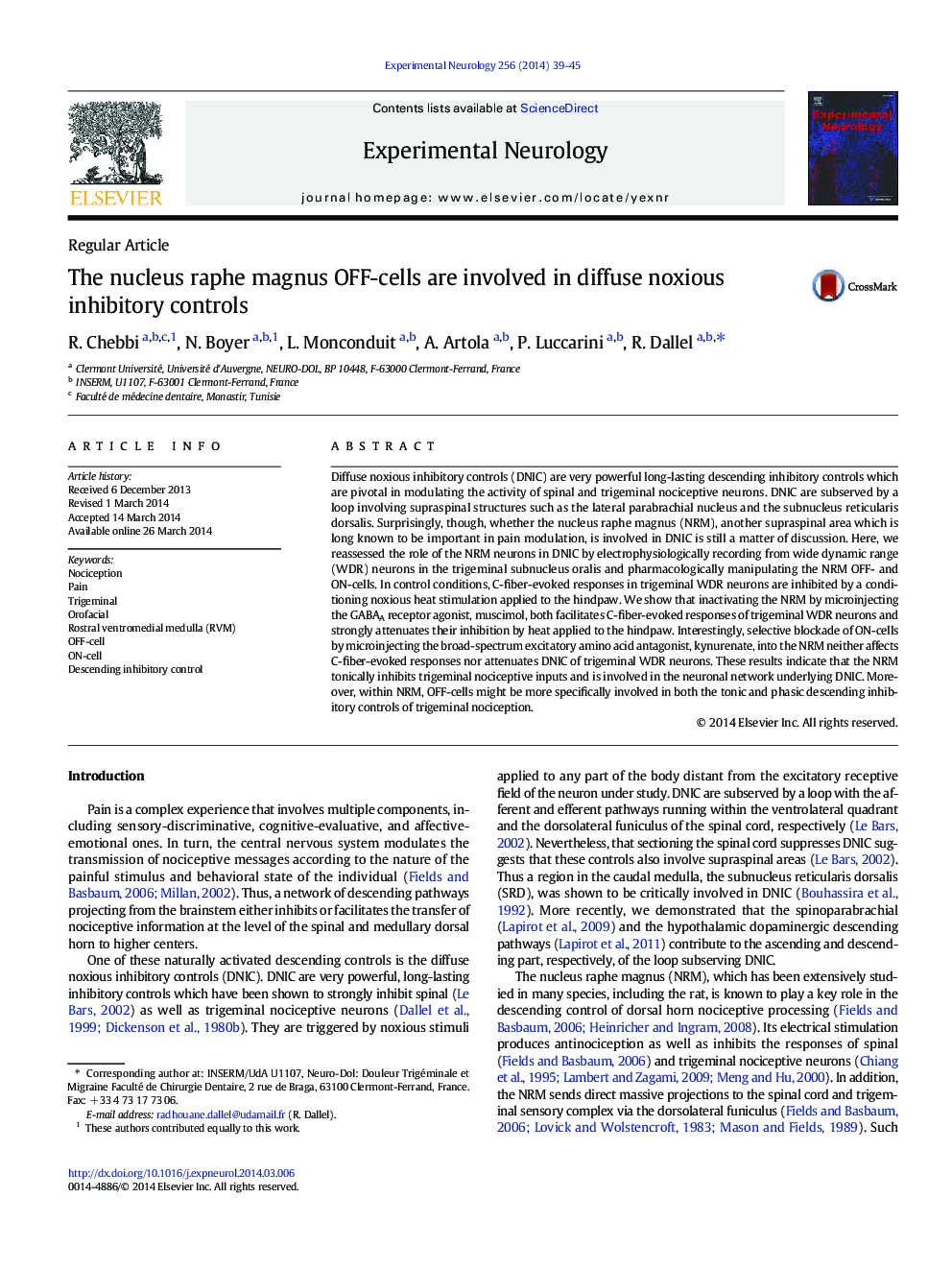| Article ID | Journal | Published Year | Pages | File Type |
|---|---|---|---|---|
| 3055534 | Experimental Neurology | 2014 | 7 Pages |
Highlight•NRM microinjection of muscimol increases C-fiber responses of trigeminal WDR neurons.•NRM microinjection of muscimol strongly attenuates DNIC.•Blockade of NRM ON-cells had no effect on both responses of WDR neurons and DNIC.•Data suggest that NRM OFF-cells are involved in the network underlying DNIC.
Diffuse noxious inhibitory controls (DNIC) are very powerful long-lasting descending inhibitory controls which are pivotal in modulating the activity of spinal and trigeminal nociceptive neurons. DNIC are subserved by a loop involving supraspinal structures such as the lateral parabrachial nucleus and the subnucleus reticularis dorsalis. Surprisingly, though, whether the nucleus raphe magnus (NRM), another supraspinal area which is long known to be important in pain modulation, is involved in DNIC is still a matter of discussion. Here, we reassessed the role of the NRM neurons in DNIC by electrophysiologically recording from wide dynamic range (WDR) neurons in the trigeminal subnucleus oralis and pharmacologically manipulating the NRM OFF- and ON-cells. In control conditions, C-fiber-evoked responses in trigeminal WDR neurons are inhibited by a conditioning noxious heat stimulation applied to the hindpaw. We show that inactivating the NRM by microinjecting the GABAA receptor agonist, muscimol, both facilitates C-fiber-evoked responses of trigeminal WDR neurons and strongly attenuates their inhibition by heat applied to the hindpaw. Interestingly, selective blockade of ON-cells by microinjecting the broad-spectrum excitatory amino acid antagonist, kynurenate, into the NRM neither affects C-fiber-evoked responses nor attenuates DNIC of trigeminal WDR neurons. These results indicate that the NRM tonically inhibits trigeminal nociceptive inputs and is involved in the neuronal network underlying DNIC. Moreover, within NRM, OFF-cells might be more specifically involved in both the tonic and phasic descending inhibitory controls of trigeminal nociception.
Graphical abstractFigure optionsDownload full-size imageDownload as PowerPoint slide
